|
In addition to the flutes currently available for sale from Turtle Mound Flutes
and our custom flutes, the following are some of our other creations.
More
Flutes from Turtle Mound Flutes
| Name |
Wood |
Fetish |
Key |
| Sogwili ("Horse") |
Eastern Red Cedar |
Mesquite |
"High" Cm |
| Tsowasga ("Red-Winged Blackbird) |
Sassafras |
Cocobolo |
"High" Cm |
| Totsuwa ("Cardinal") |
Alaskan Yellow Cedar |
Padauk |
"High" Cm |
| Daksi ("Tortoise") |
Eastern Red Cedar |
Cocobolo |
"High" Cm |
| Awohali ("Eagle") |
Eastern Red Cedar |
Alaskan Yellow Cedar |
"Middle" Bm |
| Tsulasgi ("Alligator") |
Red Cedar |
Tulipwood |
"Middle" Bbm |
| Waya ("Wolf") |
Sassafras |
Mesquite |
"Middle" Am |
| Yona ("Bear") |
Alaskan Yellow Cedar |
Black Walnut |
"Middle" Am |
| Golanuh ("Raven") |
Cherry |
Purpleheart |
"Middle" Am |
| Tsulasgi ("Alligator") |
Eastern Red Cedar |
Tulipwood |
"Middle" Am |
| Totsuwa ("Redbird") |
Black Walnut |
Padauk |
"Middle" Am |
| Wahuhi ("Owl") |
Eastern Red Cedar |
Mesquite |
"Middle" Am |
| Saloli ("Squirrel") |
Sassafras/Black Walnut |
Mesquite |
"Middle" Am |
| Kuhtli ("Raccoon") |
Sassafras/Mesquite |
Mesquite |
"Middle" Am |
| Waya ("Wolf") |
Eastern Red Cedar |
Mesquite |
"Middle" Am |
| Daksi ("Turtle") |
Sassafras |
Cocobolo |
"Middle" Am |
| Tsulasgi ("Alligator") |
Red Cedar |
Tesota |
"Middle" Am |
| Tsula ("Fox") |
Cherry |
Padauk |
"Middle" Am |
| Waya ("Wolf") |
Eastern Red Cedar |
Mesquite |
"Middle" Am |
| Tsowasga ("Red-Winged Blackbird) |
Red Cedar |
Cocobolo |
"Middle" Am |
| Tsula
("Fox") |
Yellow Cedar |
Padauk |
"Middle" Am |
| Golanuh ("Raven") |
Alaskan Yellow Cedar |
Cocobolo |
"Middle" Am |
| Ahwi ("Deer") |
Red Cedar/Yellow Cedar |
Purpleheart |
"Middle" Am |
Tsowasga
("Red-Winged Blackbird") |
Alaskan Yellow Cedar/Red Cedar |
Tulipwood |
"Middle" Am |
| Daksi ("Tortoise") |
Alaskan Yellow Cedar/Red Cedar/Canary Wood |
Red Cedar |
"Middle" Am |
| Tsula ("Fox") |
Eastern Red Cedar |
Padauk |
"Middle" Am |
| Yansa ("Buffalo") |
Hackberry |
Black Walnut |
"Middle" Am |
| Golanuh ("Raven) |
Yellowheart |
Cocobolo |
"Middle" Am |
| Dalala ("Woodpecker") |
Honey Mesquite |
Cocobolo |
"Middle" Am |
| Yansa ("Buffalo") |
Cherry |
Tesota |
"Middle" Abm |
| Waya ("Wolf") |
Red Cedar |
Mesquite |
"Middle" Abm |
| Awohali ("Eagle") |
Spalted Hackberry |
Cocobolo |
"Middle" Gm |
| Yansa ("Buffalo") |
Spalted Hackberry |
Canary Wood |
"Middle" Gm |
| Daksi ("Turtle") |
Red Cedar |
Mun Ebony |
"Middle" Gm |
| Nuhnohi Udeti ("Roadrunner") |
Red Cedar |
Tulipwood |
"Middle" Gm |
| Yona ("Bear") |
Cherry |
Sassafras |
"Middle" Gm |
| Yona ("Bear") |
Yellow Cedar/Padauk |
Tesota |
"Middle" Gm |
| Golanuh ("Raven") |
Red Cedar |
Cocobolo |
"Middle" Gm |
| Kuhtli ("Raccoon") |
Cherry |
Tesota |
"Middle" Gm |
| Daksi ("Tortoise") |
Black Walnut |
Silver Maple |
"Middle" Gm |
| Totsuwa ("Redbird") |
Red Cedar/Yellow Cedar |
Padauk |
"Middle" Gm |
| Walela ("Hummingbird") |
Poplar |
Red Oak |
"Middle" Gm |
| Waya ("Wolf") |
Walnut/Red Oak |
Cocobolo |
"Middle" Gm |
| Ujonati ("Rattlesnake") |
Alaskan Yellow Cedar |
Poplar |
"Middle" Gm |
| Awohali ("Eagle") |
Eastern Red Cedar |
Mesquite |
"Middle" Gm |
| Saloli ("Squirrel") |
Spalted Hackberry |
Mesquite |
"Middle" Gm |
| Tawodi ("Hawk") |
Black Walnut |
Sassafras |
"Middle" Gm |
| Golanuh ("Raven") |
Bubinga |
Mun Ebony |
"Middle" Gm |
| Wahuhi ("Owl") |
Cherry |
Canary Wood |
"Middle" Gm |
| Ahwi Equa ("Elk") |
Alaskan Yellow Cedar |
Tesota |
"Middle" F#m |
| Yona ("Bear") |
Red Cedar |
Black Walnut |
"Middle" F#m |
| Kuhtli ("Raccoon") |
Cherry / Purpleheart |
Mesquite |
"Middle" F#m |
| Dalala ("Woodpecker") |
Red Cedar/Yellow Cedar |
Canary Wood |
"Middle" F#m |
| Tluhdatsi ("Panther") |
Spalted Hackberry |
Mesquite |
"Middle" F#m |
| Walela ("Hummingbird") |
Red Cedar/Yellow Cedar/Purpleheart |
Tesota |
"Middle" F#m |
| Daksi ("Tortoise") |
Poplar |
Alaskan Yellow Cedar |
"Middle" F#m |
| Waya ("Wolf") |
Red Cedar / Mesquite |
Brown Ebony |
"Middle" F#m |
| Tluhdatsi ("Panther") |
Black Walnut / Mesquite |
Mesquite |
"Middle" F#m |
| Awohali ("Eagle") |
Hackberry |
Cocobolo |
"Middle" F#m |
| Yona ("Bear") |
Honey Mesquite / Walnut |
Black Walnut |
"Middle" F#m |
| Tsulasgi ("Alligator") |
Red Cedar |
Tulipwood |
"Middle" Fm |
| Walela ("Hummingbird") |
Walnut |
Tulipwood |
"Middle" Fm |
| Awohali ("Eagle") |
Walnut/Red Oak |
Red Oak |
"Middle" Fm |
| Kuhtli ("Raccoon") |
Cherry/Silver Maple |
Mesquite |
"Middle" Em |
| Daksi ("Tortoise") |
Black Walnut/Canary Wood |
Mun Ebony |
"Middle" Em |
| Sogwili ("Horse") |
Black Walnut / Oregon Myrtlewood |
Canary Wood |
"Middle" Em |
| Golanuh ("Raven") |
Sassafras/Mun Ebony |
Mun Ebony |
"Middle" Em |
| Golanuh ("Raven") |
Sassafras |
Cocobolo |
"Middle" Em |
| Tluhdatsi ("Panther") |
Red Cedar |
Canary Wood |
"Middle" Em |
| Tsula ("Fox") |
Red Cedar/Yellow Cedar/Cocobolo |
Padauk |
"Middle" Em |
| Awohali ("Eagle") |
Red Cedar |
Purpleheart |
"Middle" Em |
| Dalala ("Woodpecker") |
Cherry |
Cocobolo |
"Middle" Em |
| Totsuwa ("Redbird") |
Black Walnut |
Padauk |
"Middle" Em |
| Golanuh ("Raven") |
Sassafras |
Cocobolo |
"Middle" Em |
| Dalala ("Woodpecker") |
Red Cedar |
Canary Wood |
"Middle" Em |
| Golanuh ("Raven") |
Red Cedar |
Cocobolo |
"Middle" Em |
| Tluhdatsi ("Panther") |
Red Cedar |
Canary Wood |
"Middle" Em |
| Tsulasgi ("Alligator") |
Red Cedar/Canary Wood/Cocobolo |
Tulipwood |
"Middle" Em |
| Tsulasgi ("Alligator") |
Mulberry |
Cocobolo |
"Middle" Em |
| Awohali ("Eagle") |
Red Cedar/Purpleheart/ White Ash |
Oregon Myrtlewood |
"Middle" Em |
| Golanuh ("Raven") |
Spalted Hackberry |
Mun Ebony |
"Middle" Ebm |
| Sogwili ("Horse") |
Spalted Hackberry |
Walnut |
"Middle" Ebm |
| Sogwili ("Horse") |
Spalted Hackberry |
Mesquite |
"Middle" Ebm |
| Wahuhi ("Owl") |
Red Cedar/Canary Wood |
Tesota |
"Middle" Ebm |
| Sogwili ("Horse") |
Cherry |
Tesota |
"Middle" Ebm |
| Kuhtli ("Raccoon") |
Sassafras |
Mesquite |
"Middle" Ebm |
| Guh-he ("Bobcat") |
Alaskan Yellow Cedar / Padauk |
Tesota |
"Middle" Ebm |
| Daksi ("Turtle") |
Red Cedar |
Cocobolo |
"Middle" Dm |
| Ahwi Equa ("Elk") |
Alaskan Yellow Cedar |
Mesquite |
"Middle" Dm |
| Tluhdatsi ("Panther") |
Black Walnut / Mesquite |
Mesquite |
"Middle" Dm |
| Waya ("Wolf") |
Alaskan Yellow Cedar / Purpleheart |
Tesota |
"Middle" Dm |
| Wahuhi ("Owl") |
Red Cedar |
Canary Wood |
"Middle" Dm |
| Sogwili ("Horse") |
Black Walnut/White Ash |
Hackberry |
"Middle" Dm |
| Guh-he ("Bobcat") |
Eastern Red Cedar |
Mesquite |
"Middle" Dm |
| Dalala ("Woodpecker") |
Eastern Red Cedar |
Cocobolo |
"Middle" Dm |
| Tsula ("Fox") |
Cherry |
Padauk |
"Middle" Dm |
| Totsuwa ("Redbird") |
Red Cedar/Yellow Cedar |
Padauk |
"Middle" Dm |
| Yona
("Bear") |
Red Cedar |
Mesquite |
"Middle" Dm |
| Dalala ("Woodpecker") |
Walnut |
Spalted Hackberry |
"Middle" Dm |
| Waya ("Wolf") |
Red Cedar |
Tesota |
"Middle" Dm |
| Yona ("Bear") |
Red Cedar |
Purpleheart |
"Middle" Dm |
| Daksi ("Turtle") |
Eastern Red Cedar |
Cocobolo |
"Middle" Dm |
| Walela ("Hummingbird") |
Black Walnut |
Purpleheart |
"Middle" Dm |
| Kuhtli ("Raccoon") |
Spalted Hackberry |
Mesquite |
"Middle" Dm |
| Waya ("Wolf") |
Padauk |
Cocobolo |
"Middle" Dm |
| Walela ("Hummingbird") |
Osage Orange |
Tulipwood |
"Middle" Dm |
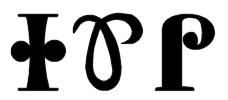
|
(Sogwili)
|
|
(Cherokee for "Horse")
|
This aromatic eastern red cedar flute is tuned to the "high" C minor pentatonic scale.
The fetish is carved from mesquite and sports a mane donated by my sister's
horse Junior Bug. About this horse she says:
He's
a small compact quarter horse that has a nice smooth ride and a beautiful head.
I use him pretty much for trail riding. He's generally level headed and quick on
his feet. He's been hauled all around Central Texas for trail rides and goes any
where you ask him too. His only real problem though is with water. It seems that
once he gets into the water, if it's more than a couple of feet deep, he'll lay
down in it. I guess on hot days, it must feel pretty good to him, but it's not
too good for the leather saddle or the digital camera hanging off the side of
the saddle! I've had Junior about 4 years now. He was only 3 or 4 when I got
him, so he's still on the young side as far as the rest of the group.
Just below the nest is a burned & painted scene that wraps completely
around the flute of three galloping Arabians before a lake. Near the foot is a
rearing horse burned in silhouette before a burned & painted lightning bolt.
This scene also wraps completely around the flute. One more image of a horse's
head is burned at the top near the mouthpiece. The lace holding the horse head
fetish to the nest is cut from dyed deerskin. Because of the way these images
wrap around the flute, it is hard to take pictures that do it justice. This is
truly a beautiful flute with powerful energy from sogwili. (April 2009)

|
(Tsowasga)
|
|
(Cherokee for "Red-Winged Blackbird")
|
This little sassafras flute is tuned to the "high" Cm pentatonic scale. The
fetish is carved from South American cocobolo. A scene with a male red-winged
blackbird rising from the brush and a pair of young
birds down below is burned and painted into the flute body just below the nest
area. Another male bird, with the characteristic red wing peaks and sitting in a
bush,
is burned and painted into the body near the foot. The lace holding the fetish to the nest
is cut from black-dyed deerskin. (February 2009)

|
(Walela)
|
|
(Cherokee for "Hummingbird")
|
This black walnut flute is tuned to the "High" Cm pentatonic scale. Birds are considered
messengers. The flying hummingbird fetish is carved from Alaskan yellow cedar.
Ruby-throated hummingbirds are also burned & painted into the body of this flute below the nest area and
in the area between the direction holes and the bottom playing
hole. A small feeding bird is also burned in just below the mouthpiece. The lace holding the fetish to the nest
is cut from dyed deerskin. (April 2009)
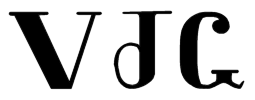
|
(Totsuwa)
|
|
(Cherokee for "Redbird" or
"Cardinal")
|
This Alaskan yellow cedar flute is tuned to the "high" Cm pentatonic scale. The Cherokee consider birds to be messengers, and the redbird (cardinal)
is respected for its beauty. This flute's fetish is a cardinal
carved from African padauk. The beautiful color of this African wood naturally captures
Totsuwa's color, accented by a painted beak. An image of the cardinal
is burned and painted into the flute body just
below the nest and another just above the direction holes
at the foot. The lace holding the
fetish to the nest is cut from cocoa-dyed deerskin. (February 2009)
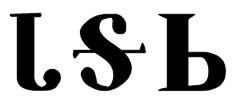
|
(Daksi)
|
|
(Cherokee for "Tortoise")
|
This aromatic eastern red cedar flute is tuned to the "high" Cm pentatonic scale.
The gopher tortoise
used as a model for this flute has a nest right under our bedroom window of our
Florida home, and the photos above show one entry to her nest in the background. The
tortoise fetish is carved from South American cocobolo with crushed turquoise
inlay, and turquoise chips inlayed for the eyes. There is an image of a gopher
tortoise burned into the flute body just below the nest area. A turtle symbol is
burned and painted between the direction holes and the lowest
finger hole. There is also a pattern burned and painted all around the back side at the level of this design. The lace holding the fetish
to the nest is cut from tanned deerskin. (February 2009)

|
(Awohali)
|
|
(Cherokee for "Eagle")
|
This eastern red cedar flute is tuned to the B minor pentatonic scale. The
eagle is a revered bird among many Native peoples, including the Cherokee. The
fetish is a bald eagle head, carved from Alaskan Yellow Cedar. A bald eagle head is burned into
the body of this flute just below the nest area. The photo above only suggests
the detail of this bird's feathers. Another bald eagle in flight is burned,
with white-painted highlights, at
the foot. The silhouette of yet another eagle in flight is
burned just below the mouthpiece, with a full moon inlayed in crushed
abalone shell. The lace holding the
fetish to the nest is cut from deerskin. [Click
here to hear a sound-clip of this flute.] (May 2016)

|
(Tsulasgi)
|
|
(Cherokee for "Alligator")
|
This aromatic eastern red cedar flute is tuned to the Bb (B-flat) minor pentatonic scale.
The fetish is an baby alligator carved from South American tulipwood. A full
alligator, viewed from above, is burned into the flute body below the nest area
and an alligator head, cruising through a Florida wetland (depicted by turquoise
inlay) is burned above the direction holes near the foot of this flute. The lace
holding the fetish to the nest is cut from tanned deerskin. The grain in this
flute, especially apparent in the full body view in the top photo, is
particularly impressive. This flute would be ideal for someone with somewhat smaller hands, as the
holes are relatively close together, but works well for anyone with average
sized hands too. (January 2008)

|
(Waya)
|
|
(Cherokee for "Wolf")
|
This beautiful little sassafras flute with the Waya (wolf)
theme is tuned to the A minor pentatonic scale. It has prominent grain that enhances the wood's beauty.
Near the mouthpiece is a turquoise inlay of the wolf paw print.
The fetish
is a prowling timber wolf, carved from mesquite. A howling wolf's head is burned into the flute body
just below the nest area, and the image of a reclining wolf is burned just above
the direction holes. The lace holding the fetish to the flute is cut from deerskin..
(March 2010)
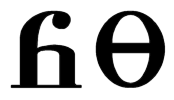
|
(Yona)
|
|
(Cherokee for "Bear")
|
This Alaskan yellow cedar flute, tuned to the A minor pentatonic scale,
sports the very popular Yona (bear) theme. The fetish is a carved
standing black bear from black walnut. The lace holding the fetish to the nest is cut from
dark cocoa-colored dyed deerskin. Images of bears are burned into the body of this flute in
three places. Paint highlights all three images, with the grizzly standing in
the water the most prominent use of it. The grizzly cub near the mouthpiece is
curious about a butterfly that has landed on a rock near him. (January
2010)

|
(Tsulasgi)
|
|
(Cherokee for "Alligator")
|
This is the first flute I've made from mulberry, and the result is stunning.
This Tsulasgi (alligator) themed flute is tuned to the [de facto]
standard E-minor pentatonic scale.
The fetish is an alligator carved from South American cocobolo. A prowling full
alligator is burned into the flute body below the nest area
and an alligator head, cruising through a Florida wetland is burned above the direction holes near the foot of this flute.
A smaller alligator is also burned just below the mouthpiece. The lace
holding the fetish to the nest is cut from deerskin. (March 2010)

|
(Awohali)
|
|
(Cherokee for "Eagle")
|
This beautiful aromatic eastern red cedar flute is tuned to a very mellow Em pentatonic scale.
The mouthpiece and extended endcap are South American purpleheart, with accent
rings of white ash. The
eagle is a revered bird among many Native peoples, including the Cherokee. The
fetish is an eagle in flight, carved from Oregon myrtlewood. An eagle head is burned into
the body of this flute just below the nest area and an eagle in flight is burned in at
the foot. The lace holding the
fetish to the nest is cut from deerskin. (June 2009)

|
(Golanuh)
|
|
(Cherokee for "Raven")
|
This little A minor pentatonic tuned flute with the Golanuh (raven) theme is
made of beautifully grained cherry wood. The fetish is a
stylized raven in flight carved from purpleheart, The scene burned & painted below the
nest area is an abstract image of a man reflected as a raven in the water. Below
the lowest hole is a scene of a raven, sitting on a branch, looking down at a
wolf looking back up. A small flying raven is also burned into the area between the nest
and the mouthpiece. The lace holding the fetish to the nest is cut from deerskin.
(January 2010)

|
(Tsulasgi)
|
|
(Cherokee for "Alligator")
|
This beautiful aromatic eastern red cedar flute is tuned to the Am pentatonic scale.
The fetish is an alligator carved from tulipwood. A small full
alligator, viewed from above, is burned into the flute body just below the
mouthpiece. Another full body alligator is burned below the nest area
and an alligator head, cruising through a Florida wetland (depicted with painted highlights) is burned above the direction holes near the foot of this flute. The lace
holding the fetish to the nest is cut from deerskin. (March 2010)

|
(Totsuwa)
|
|
(Cherokee for "Redbird" or
"Cardinal")
|
This beautiful black walnut flute has some very interesting grain. It is tuned to the A-minor pentatonic scale. The Cherokee consider birds to be messengers, and the redbird (cardinal)
is respected for its beauty. This flute's fetish is a cardinal
carved from African padauk, selected for its natural red color. An image of the cardinal
is burned and painted into the flute body just
below the nest and another just above the direction holes
at the foot. The lace holding the
fetish to the nest is cut from gray-dyed deerskin. (March 2010)
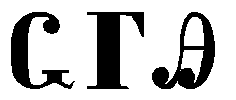
|
(Wahuhi)
|
|
(Cherokee for "Owl")
|
This aromatic eastern red cedar flute is tuned to the A minor pentatonic scale. This flute's fetish is a great horned owl carved from
honey mesquite. The image of a barn owl in flight is burned into the flute body
just below the nest area. This flying owl is interesting in how its spread wings
wrap almost all the way around the flute body, although not apparent from the
photos above. Over the shoulder of this barn owl is the moon, inlayed with
crushed abalone shell. A great horned owl sitting on a stump is burned into the flute body
at the direction holes. The customer of this custom-order flute provided some
stones with special meaning to her that I crushed and used to create the little
inlayed markers between the six playing holes. The lace holding the fetish to the nest is cut from deerskin. (March
2010)
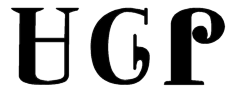
|
(Saloli)
|
|
(Cherokee for "Squirrel")
|
This sassafras flute has a black walnut mouthpiece and end cap that extends
up above the direction holes. It is tuned to the A minor pentatonic scale. This flute's fetish is a
feeding red squirrel carved from honey mesquite. The image of a pair of
squirrels sharing a pine branch is burned into the flute body just
below the nest. Another squirrel, this one a gray squirrel, is burned into the
flute just above the direction holes. Slight color is introduce with a little
paint on the leaves of branch supporting this squirrel.
The lace holding the fetish to the nest is cut from dyed deerskin. (March
2010)

|
(Kuhtli)
|
|
(Cherokee for "Raccoon")
|
This sassafras flute has honey mesquite accent rings just below the
mouthpiece and a honey mesquite end cap. It is tuned to the A minor pentatonic scale.
The fetish, depicting a raccoon emerging from a hollow stump, is carved from
honey mesquite. Images of
raccoons are also burned into this flute below the nest area (a cute fellow
clinging to a branch that's drooping under his weight) and above the
direction holes near the foot (peeking into the crotch of a bigger tree). The lace holding the fetish to the nest is cut from
tanned deerskin. (March 2010)

|
(Waya)
|
|
(Cherokee for "Wolf")
|
This beautiful little eastern red cedar flute with the Waya (wolf)
theme is tuned to the A minor pentatonic scale. It has colorful grain patterns
and a couple interesting little knots that enhance the wood's beauty. One knot
was a little too big to fill and was hidden beneath turquoise inlay of the wolf paw print.
The fetish
is new design of a walking wolf, carved from mesquite. A howling wolf's head is burned into the flute body
just below the nest area, and the image of a reclining wolf is burned just above
the direction holes. The lace holding the fetish to the flute is cut from
gray-dyed deerskin..
(January 2010)

|
(Daksi)
|
|
(Cherokee for "Turtle")
|
This little sassafras flute with the Daksi (turtle) theme is tuned to the A
minor pentatonic scale. When I gave Claire my A-minor Ahwi (deer) flute, I
decided to make this one for my personal use. The selection of the Daksi theme
was a natural. The sea turtle fetish is carved from cocobolo and is inlayed with
Bali coral depicting the plates of the shell. Sea turtle images are burned and painted into the body of this
flute just below the nest area and just above the direction holes near the foot.
As these turtle images wrap around much of the flute, they are much clearer in real life than they appear in the photos
above. The lace holding the fetish
to the nest is cut from cocoa-colored dyed deerskin. (January 2010)

|
(Tsulasgi)
|
|
(Cherokee for "Alligator")
|
This beautiful aromatic eastern red cedar flute is tuned to the Am pentatonic scale.
The fetish is an alligator carved from tesota (sometimes known as desert
ironwood). A full
alligator, viewed from above, is burned into the flute body below the nest area
and an alligator head, cruising through a Florida wetland at sunset (depicted with painted highlights) is burned above the direction holes near the foot of this flute.
A smaller alligator is also burned just below the mouthpiece. The lace
holding the fetish to the nest is cut from deerskin. (April 2009)

|
(Tsula)
|
|
(Cherokee for "Fox")
|
This cherry flute is tuned to the A-minor pentatonic scale. This flute's fetish is a
red fox carved from African Padauk wood, the red color is the natural color of
the wood. The image of a pair of gray fox kits is burned into the flute body just
below the nest. A red fox is also burned into the lower area near the foot of this flute. A
unique feature of this flute is the real fox tail attached by deerskin lace near
the foot of this flute. The lace holding the fetish to the nest is also cut from tanned deerskin.
(April 2009)

|
(Waya)
|
|
(Cherokee for "Wolf")
|
This aromatic eastern red cedar flute is tuned to the "middle" Am pentatonic
scale. The fetish
is a howling wolf's head carved from North American mesquite. Just below the
"nest" is the image of a scene depicting a pair of wolves keeping
watch from a high bluff and between the bottom "finger
hole" and the "direction holes" near the foot is wolf's head.
Another small wolf is burned in just below the mouthpiece. The lace holding the fetish to the nest is cut from
black-dyed deerskin. (January 2009)

|
(Tsowasga)
|
|
(Cherokee for "Red-Winged Blackbird")
|
This aromatic eastern cedar flute is tuned to the Am pentatonic scale. The
fetish is carved from South American cocobolo. A red-winged
blackbird, with the characteristic red wing peaks inlayed with pink coral,
is burned into the body of this flute below the nest area. Near the foot of the
flute is a scene with a male bird rising from the brush and a pair of young
birds down below. Again the crest of the male bird is inlayed with pink coral
for the red color, and a little paint highlights the brush. The lace holding the fetish to the nest
is cut from tanned deerskin. (June 2008)

|
(Tsula)
|
|
(Cherokee for "Fox")
|
This Alaskan yellow cedar flute is tuned to the Am pentatonic scale. Its fetish is a
red fox carved from African Padauk wood, the red color is the natural color of
the wood. The image of a pair of gray fox kits is burned into the flute body just
below the nest. A red fox is burned into the foot of this flute, below an
inlayed pink coral sun. Subtle green paint highlights the grass. The lace holding the fetish to the nest is cut from black-dyed deerskin.
(August 2008)

|
(Golanuh)
|
|
(Cherokee for "Raven")
|
This Alaskan yellow cedar flute has a eastern red cedar mouthpiece and end
cap, and is tuned to the Am pentatonic scale. The
raven head fetish is carved from South American Cocobolo. One side is a deep
cocoa color and the other (shown in the photo above) had deep gold and brown
grain. There is a raven head image burned into the flute body below the nest area
and a raven with a flower at
the foot of this flute. The rose is inlayed with pink coral with malachite
leaves. The lace holding the fetish
to the nest is cut from black-dyed deerskin. (January 2008)
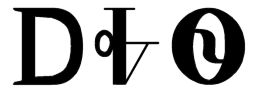
|
(Ahwi)
|
|
(Cherokee for "Deer")
|
This aromatic eastern red cedar flute is tuned to the "middle" A
minor pentatonic scale. The
fetish of this flute is a doe's head carved from South American purpleheart. A buck's
head is burned into the area just
below the "nest" and a full body buck adorns the foot, highlighted by
green malachite leaves and pink coral sun inlays. The tanned lace holding the bird to the nest
is cut from
deerskin. (January 2008).

|
(Tsowasga)
|
|
(Cherokee for "Red-Winged Blackbird")
|
This Alaskan yellow cedar flute is tuned to the Am pentatonic scale. The
accent rings above the nest and near the foot (at the direction holes) are red
cedar. The
traditional "bird" fetish is carved from tulipwood. A red-winged
blackbird, with the characteristic red wing peaks inlayed with pink coral,
is burned into the body of this flute below the nest area. The lace holding the fetish to the nest and the wrap at the foot end are cut from
black-dyed deerskin. (February 2008)

|
(Daksi)
|
|
(Cherokee for "Tortoise")
|
This Alaskan yellow cedar flute is tuned to the Am pentatonic scale. The
accent rings above the nest are red cedar on either side of a wider South
American canary wood band. The ring near the foot (at the direction holes) is
also red cedar. The gopher tortoise
used as a model for this flute has a nest right under our bedroom window of our
Florida home. The
tortoise fetish is carved from red cedar. The tortoise image burned into the flute body below the nest area
is taken from a photo of our friend when he took a walk around our front drive
one day. The turtle symbol burned in between the direction holes and the lowest
finger hole has turquoise and pink coral inlay. There is also a pattern burned
all around the back side at the level of this design. The lace holding the fetish
to the nest is cut from black-dyed deerskin. (February 2008)

|
(Tsula)
|
|
(Cherokee for "Fox")
|
This aromatic eastern red cedar flute is tuned to the A-minor pentatonic scale. This flute's fetish is a
red fox carved from African Padauk wood, the red color is the natural color of
the wood. The image of a pair of gray fox kits is burned into the flute body just
below the nest. A red fox standing near a rail fence is also burned into the lower area near the foot of this flute. The
grain of the cedar wood, particularly down the left side of this flute, is
especially beautiful. The lace holding the fetish to the nest is also cut from
frey-dyed deerskin. (July 2010)
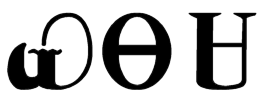
|
(Yansa)
|
|
(Cherokee for "Buffalo")
|
This spalted hackberry flute is tuned to the "standard" A minor
pentatonic scale. There was once a
species of bison (buffalo) that roamed the Great Smoky Mountains and this flute
remembers them. Unlike the plains tribes who hunted the buffalo with bow and
arrow from horseback, the Cherokee herded buffalos off cliffs and collected them
from the valley below. This flute's fetish is a buffalo carved from black
walnut. The evening scene of a pair of buffalos, one standing and one reclining
below a crushed abalone-shell inlayed moon, is burned into the flute body just
below the nest. At the foot is the image of a buffalo head that wraps half-way
around the flute body, making it hard to capture in a photo. The heavy
spalting of this wood gives it real character, but left several flaws that I
filled with crushed fuscite inlay, especially down the left side (one small area
is visible above the right side of the buffalo head, next to the bottom playing
hole, in one photo above and another between the direction hole and foot in the
full length photo). The result is a beautiful blend of colorfully grained wood
and green stone inlay. The lace holding the fetish to the nest is cut from
tanned deerskin. (July 2010)

|
(Golanuh)
|
|
(Cherokee for "Raven")
|
This little A minor pentatonic tuned flute with the Golanuh (raven) theme is
made of Brazilian Pau Amarello (also known as yellowheart) wood. The fetish is a
stylized raven in flight carved from South American cocobolo, The scene burned & painted below the
nest area is an abstract image of a man reflected as a raven in the water. Below
the lowest hole is a scene of a raven, sitting on a branch, looking down at a
wolf looking back up and howling. A small flying raven is also burned into the area between the nest
and the mouthpiece. The lace holding the fetish to the nest is cut from deerskin.
(July 2010)

|
(Dalala)
|
|
(Cherokee for "Woodpecker")
|
This Argentinean honey mesquite flute is tuned to the A minor pentatonic scale.
The fetish consists of a pileated woodpecker pecking at a log carved from South
American cocobolo.
Images of pileated woodpeckers are also burned into the flute body just below the
nest area and in flight between the direction holes and the first finger
hole (near the foot). The lace holding the fetish to the nest is cut from
tanned deerskin. (July 2010)

|
(Yansa)
|
|
(Cherokee for "Buffalo")
|
This cherry flute is tuned to the Abm (A-flat minor) pentatonic scale. There was once a
species of bison (buffalo) that roamed the Great Smokey Mountains and this flute
remembers them. Unlike the plains tribes who hunted the buffalo with bow and
arrow from horseback, the Cherokee herded buffalos off cliffs and collected them
from the valley below. This flute's fetish is a buffalo carved from North
American tesota (sometimes called "desert ironwood"). The image of a
buffalo head is burned into the flute body just
below the nest. A full body buffalo, below a pink coral inlayed sun, is burned
in near the foot of the flute. The grass in this scene is highlighted by
paint. The lace holding the fetish to the nest is cut from deerskin.
(August 2008)

|
(Waya)
|
|
(Cherokee for "Wolf")
|
This aromatic eastern red cedar flute is tuned to the "middle" Abm
(A-flat minor) pentatonic
scale. The fetish
is a howling wolf's head carved from North American mesquite. Just below the
"nest" is the image of a wolf's head, and between the bottom "finger
hole" and the "direction holes" near the foot is a scene with two
wolves on a small precipice, below a pink coral inlayed sun and a pair of
crushed abalone shell inlayed clouds. The lace holding the fetish to the nest is cut from
black-dyed deerskin. (June 2008)

|
(Awohali)
|
|
(Cherokee for "Eagle")
|
This beautiful spalted hackberry flute is tuned to the Gm pentatonic scale. The
eagle is a revered bird among many Native peoples, including the Cherokee. The
fetish is a majestic stylized eagle in flight, carved from South American
cocobolo. A bald eagle head is burned into
the body of this flute just below the nest area and an eagle in flight is burned,
with white-painted highlights, at
the foot. The silhouette of another eagle in flight over a mountain range is
burned just below the mouthpiece. The lace holding the
fetish to the nest is cut from deerskin. (November 2009)

|
(Yansa)
|
|
(Cherokee for "Buffalo")
|
This spalted hackberry flute is tuned to the "standard" Gm
pentatonic scale. There was once a
species of bison (buffalo) that roamed the Great Smokey Mountains and this flute
remembers them. Unlike the plains tribes who hunted the buffalo with bow and
arrow from horseback, the Cherokee herded buffalos off cliffs and collected them
from the valley below. This flute's fetish is a buffalo carved from South
American canary wood. The image of a pair of buffalos, one standing and one reclining, is burned into the flute body just
below the nest. At the foot is the image of a buffalo head that wraps half-way
around the flute body, making it hard to capture in a photo.
The lace holding the fetish to the nest is cut from black-dyed deerskin. (January 2009)

|
(Daksi)
|
|
(Cherokee for "Turtle")
|
This aromatic eastern red cedar flute, tuned to the Gm pentatonic scale, was
specially made for Californian Cindy Sisco. The sea turtle fetish is carved from southeast Asian mun
ebony (sometimes called "moon ebony") and is inlayed with blue lapis
depicting the plates of the shell. Sea turtle images are burned and painted into the body of this
flute just below the nest area and just above the direction holes near the foot.
As these turtle images wrap around much of the flute, they are much clearer in real life than they appear in the photos
above. The lace holding the fetish
to the nest is cut from gray-dyed deerskin. (November 2009)

|
(Nuhnohi Udeti)
|
|
(Cherokee for "Roadrunner")
|
I liked the custom Nuhnohi Udeti (Roadrunner) flute that I did
some time ago, so I decided it was time to do another. This one is a aromatic
eastern red cedar in the key of Gm. The carved running roadrunner fetish is
carved from South American tulipwood, a wood I like using for its beautiful
grain (see bottom image above). Roadrunner images are burned into the body in
three places. The scene near the foot of the flute wraps completely around the
flute and includes three painted saguaro cacti. The lace holding the fetish to
the flute's nest is cut from black-dyed deerskin. (January 2009)

|
(Yona)
|
|
(Cherokee for "Bear")
|
This Gm flute is made from a light cherry wood. The fetish is a carved
standing black bear from sassafras. The lace holding the fetish to the nest is cut from
tanned deerskin. Images of bears are burned into the body of this flute in
three places. Paint highlights all three images, with the grizzly standing in
the water the most prominent use of it. The grizzly cub near the mouthpiece is
curious about a butterfly that has landed on a rock near him. (January 2009)

|
(Yona)
|
|
(Cherokee for "Bear")
|
This Gm flute is made of Alaskan yellow cedar with a South American padauk
mouthpiece and extended end cap.
The fetish is a black bear carved from North American tesota (also known as
desert ironwood). A walking bear
on all fours prowls just below the nest
area. Just above the extended end cap is a momma bear with her two cubs. Both images use painted
highlights to more prominently feature the animals. Finally, a pair of
bear paw prints are burned in between the nest and the mouthpiece. The lace holding the fetish to the nest is cut from
cocoa-dyed deerskin. (November 2008)

|
(Golana)
|
|
(Cherokee for "Raven")
|
This aromatic eastern red cedar flute is tuned to the Gm pentatonic scale.
The fetish is a raven head carved from South American cocobolo. The unusual
coloring of the fetish gives the impression that it consists of two pieces of
wood glued together, but it is a single, beautiful piece. Below the nest is a
raven sitting on a branch, looking down as if considering a meal. At the foot is
a raven in flight, soaring over a turquoise inlayed stream beneath a Bali coral
inlayed sun. A small flying raven is also burned into the area between the nest
and the mouthpiece. The lace holding the fetish to the nest is cut from tan-dyed deerskin.
(November 2008)

|
(Kuhtli)
|
|
(Cherokee for "Raccoon")
|
This cherry flute is tuned to the Gm pentatonic scale. The top and bottom
photos shows some of the beautiful grain in the wood of this flute, unusual for
the cherry that I get from my supplier. A slight flaw in the surface layer of
wood that fell between the top two holes was repaired with some turquoise inlay,
giving a beautiful effect that complements the strong grain color in this area.
The fetish, depicting a raccoon emerging from a hollow stump, is carved from
North American tesota (sometimes called desert ironwood). Images of
raccoons are also burned into this flute below the nest area and above the
direction holes near the foot. A set of raccoon tracks are outlined along the
right side of this flute from the mouthpiece down past the nest area. The lace holding the fetish to the nest is cut from
dyed deerskin. (September 2008)

|
(Daksi)
|
|
(Cherokee for "Tortoise")
|
This black walnut flute is tuned to the Gm pentatonic scale. This flute has
some of the prettiest grain that I've run across in black walnut. The
tortoise fetish is carved from silver maple and has a band of blue lapis inlayed
around the base of its shell.. Tortoise images are burned into the body of this
flute just below the nest area and just above the direction holes near the foot.
These images are much clearer in real life than they appear in the photos
above. A little paint is used to highlight the grass that these animals
are roaming through, and the sun image above the tortoise near the foot is
inlayed with crushed Bali coral. The lace holding the fetish
to the nest is cut from tanned deerskin. (September 2008)

|
(Totsuwa)
|
|
(Cherokee for "Redbird" or
"Cardinal")
|
This aromatic eastern red cedar flute has a Alaskan yellow cedar mouthpiece,
accent band, and end cap, and is tuned to the Gm pentatonic scale. The Cherokee consider birds to be messengers, and the redbird (cardinal)
is respected for its beauty. This flute's fetish is a cardinal head
carved from padauk. The beautiful color of this African wood naturally captures
Totsuwa's color (this carving is not painted or dyed!). An image of the cardinal
is burned into the flute body just
below the nest and another inlayed in pink coral just above the direction holes
at the foot. A woodland wrap of tanned deerskin finishes the decorations on this
flute just above the inlayed image. The lace holding the
fetish to the nest is also cut from tanned deerskin. (February 2008)

|
(Walela)
|
|
(Cherokee for "Hummingbird")
|
This poplar flute is tuned to the Gm pentatonic scale. Birds are considered
messengers. The flying hummingbird fetish is carved from red oak.
Hummingbirds are also burned into the body of this flute below the nest area and
wrapping around the top two playing holes. The lace holding the fetish to the nest and the wrap at the foot end are cut from
black-dyed deerskin. (September 2007).

|
(Waya)
|
|
(Cherokee for "Wolf")
|
This black walnut flute has a red oak mouthpiece and is tuned to the Gm pentatonic
scale. The fetish
is a seated, howling wolf carved from South American cocobolo. It is almost
solid black on one side (top photo) but has a beautiful golden grain on the
other (bottom photo). There are two
scenes of wolves burned into the body of this flute. Just below the
"nest" are two standing, howling wolves, and between the bottom "finger
hole" and the "direction holes" near the foot is a single, leering
wolf. The lace holding the fetish to the nest is cut from
black-dyed deerskin. The grain, especially on the bottom under the nest is
particularly beautiful. There is a very interesting knot below the
"barrier" between the two chambers. Because this area has neither
structural nor acoustic impact on the flute, it was left natural (rather than
filling with an unnatural filler) and enhances the beauty of this flute. This is
below the lace holding the fetish in the photos above. (November 2007)

|
(Ujonati)
|
|
(Cherokee for "Rattlesnake")
|
This Alaskan yellow cedar flute is tuned to the Gm pentatonic scale. The
diamondback rattlesnake head fetish is carved from poplar. A coiled diamondback
is burned into the body of this flute below the nest area and a coiled rattler
is inlayed in turquoise near the foot of this flute. The lace holding the fetish to the nest and the wrap at the foot end are cut from
black-dyed deerskin, with wooden bead "rattles" attached to the wrap
lacing. (October 2007)

|
(Awohali)
|
|
(Cherokee for "Eagle")
|
This beautiful aromatic eastern red cedar flute is tuned to the G minor pentatonic scale. The
eagle is a revered bird among many Native peoples, including the Cherokee. The
fetish is a bald eagle head, carved from mesquite. A bald eagle head is burned into
the body of this flute just below the nest area. The photo above only suggests
the detail of this bird's feathers. Another bald eagle in flight is burned,
with white-painted highlights, at
the foot. The silhouette of yet another eagle in flight over a mountain range is
burned just below the mouthpiece. The lace holding the
fetish to the nest is cut from deerskin. (October 2010)

|
(Saloli)
|
|
(Cherokee for "Squirrel")
|
This spalted hackberry flute is tuned to the G minor pentatonic scale. This flute's fetish is a
feeding red squirrel carved from honey mesquite. The image of a pair of
squirrels sharing a pine branch is burned into the flute body just
below the nest. Another squirrel, this one a gray squirrel, is burned into the
flute just above the direction holes. A bit of color is introduce with a little
paint on the leaves of branch supporting this squirrel.
The lace holding the fetish to the nest is cut from dyed deerskin. (October
2010)

|
(Tawodi)
|
|
(Cherokee for "Hawk")
|
This black walnut flute is tuned to the G minor pentatonic scale.
The fetish is a red-tail hawk in majestic flight, carved from sassafras. A
hawk's head is burned into the flute just below the true sound hole
and a red-tail in flight is burned into the flute body between the direction holes and the lowest finger
hole (near the foot). A small hawk in soaring flight is also burned in just
below the mouthpiece. The lace holding the fetish to the nest is cut from
dyed deerskin. (October 2010)

|
(Golanuh)
|
|
(Cherokee for "Raven")
|
This G minor pentatonic tuned flute with the Golanuh (raven) theme is
made of west African Bubinga wood. This is an extremely dense hardwood, making
the flute feel a little heavy for it's size. The fetish is a
stylized raven in flight carved from southeast Asian mun ebony. The scene burned & painted below the
nest area is an abstract image of a man whose spirit is reflected as a raven in the water. Below
the lowest hole is a scene of a raven, sitting on a branch, looking down at a
wolf looking back up and howling. A small flying raven is also burned into the area between the nest
and the mouthpiece. The lace holding the fetish to the nest is cut from deerskin.
(October 2010)

|
(Wahuhi)
|
|
(Cherokee for "Owl")
|
This beautiful cherry flute is tuned to the G minor pentatonic scale. This flute's fetish is a great horned owl carved from
South American canary wood. The image of a
great horned owl that has just taken to flight beneath a moon inlayed with
crushed abalone shell is burned into the flute body
below the nest. Another great horned owl, perched atop a tree stump, is burned into the
flute near its foot.
The lace holding the fetish to the nest is cut from gray-dyed deerskin.
(November 2009)

|
(Ahwi
Equa)
|
|
(Cherokee for "Elk")
|
This Alaskan yellow cedar flute is tuned to the F#m pentatonic scale.
The Cherokee call the elk the Ahwi Equa (big or great deer) and the image of
a majestic elk's head is
burned into the flute body below the nest area. Near the foot of this flute is a
full-body elk, apparently looking up to check out our presence. Near the
mouthpiece is the silhouette of another elk burned into the body. The
elk's head fetish, complete with full antlers, is carved from tesota (also known
as desert ironwood). The lace holding the fetish to the nest is cut from
cocoa-dyed deerskin. (November 2009)

|
(Yona)
|
|
(Cherokee for "Bear")
|
This F#m flute is made from aromatic eastern red cedar. The fetish is a carved
standing black bear from black walnut. The lace holding the fetish to the nest is cut from
grey-dyed deerskin. Images of bears are burned into the body of this flute in
three places. Paint highlights all three images, with the grizzly standing in
the water the most prominent use of it. The grizzly cub near the mouthpiece is
curious about a butterfly that has landed on a rock near him. (April 2009)

|
(Kuhtli)
|
|
(Cherokee for "Raccoon")
|
This cherry flute has a purpleheart mouthpiece and extended endcap, and is tuned to the F#m pentatonic scale. The fetish is a carved from
mesquite, depicting a raccoon emerging from a stump. This flute features three
images of raccoons burned into the flute's body. The lace holding the fetish to the nest is cut from
dyed deerskin. (April 2009)

|
(Dalala)
|
|
(Cherokee for "Woodpecker")
|
This red cedar flute has an Alaskan yellow cedar mouthpiece and end cap. It is tuned to the F#m pentatonic scale.
The fetish consists of a pileated woodpecker at work on a log, carved from South
American canary wood.
Images of pileated woodpeckers are also burned into the flute body just below the
nest area and between the direction holes and the first finger
hole (near the foot). In each of these images the bird's topnotch is inlayed
with pink coral to bring out the prominent red color of this species. The upper
image also has some maple leaves inlayed with green malachite. There is a
beautiful knot at the edge of the topmost (6th) finger hole (left hand photo in
middle row above) and another on the underside. The lace holding the fetish to the nest is cut from
tanned deerskin. (November 2007)

|
(Tluhdatsi)
|
|
(Cherokee for "Panther")
|
This F#m pentatonic scale flute is made of spalted hackberry. The spalted
grain on the body of this flute is truly beautiful. This
flute's theme was inspired by the endangered Florida panther, the smaller cousin of the
cougar and puma. This flute's fetish is a prowling panther carved from mesquite
and also has beautiful grain. The image of a
panther head is burned into the flute body just
below the nest. A prowling panther that is about to drink from a turquoise inlayed
pond, below a pink coral inlayed sun, is burned into the foot of this flute.
The lace holding the fetish to the nest is cut from
tanned deerskin. (July 2008)

|
(Walela)
|
|
(Cherokee for "Hummingbird")
|
This aromatic eastern red cedar flute is accented by bands of Alaskan yellow
cedar on either side of a wider purpleheart band. A yellow cedar band also
highlights the direction holes near the foot. This flute is tuned to the F#m pentatonic scale. Birds are considered
messengers. The flying hummingbird fetish is carved from tesota, also known as
desert ironwood.
Hummingbirds are also burned into the body of this flute below the nest area and
wrapping around the top two playing holes. The lace holding the fetish to the nest and the wrap at the foot end are cut from
tanned deerskin. (February 2008)

|
(Daksi)
|
|
(Cherokee for "Tortoise")
|
This poplar flute is tuned to the F#m pentatonic scale. The gopher tortoise
used as a model for this flute has a nest right under our bedroom window of our
Florida home. The tortoise image burned into the flute body below the nest area
is taken from a photo of our friend when he took a walk around our front drive
one day. Just above the deerskin wrap at
the foot of this flute is another tortoise approaching a turquoise pond inlayed into the body. The
tortoise fetish is carved from Alaskan yellow cedar. The lace holding the fetish
to the nest and the wrap at the foot end are cut from
tanned deerskin. (September 2007)

|
(Waya)
|
|
(Cherokee for "Wolf")
|
This beautiful aromatic eastern red cedar flute with the Waya (wolf)
theme is tuned to the F# minor pentatonic scale.
Near the mouthpiece is a turquoise inlay of the wolf paw print.
The fetish
is a prowling timber wolf with a raised forepaw, carved from brown ebony. A howling wolf's head is burned into the flute body
just below the nest area, and the image of a reclining wolf is burned just above
the direction holes. The lace holding the fetish to the flute is cut from deerskin..
(April 2010)

|
(Tluhdatsi)
|
|
(Cherokee for "Panther")
|
This flute is tuned to the F# minor pentatonic scale.
The black walnut body is contrasted by a mesquite endcap and mouthpiece. This
flute was inspired by the endangered Florida panther, the smaller cousin of the
cougar and puma. This flute's fetish is a prowling panther carved from Argentine
honey mesquite. The image of a reclining panther is burned into the flute body just
below the nest and a prowling panther is burned between the direction holes and
first playing hole. What makes this flute stand out is the carved panther head
at the foot, also of mesquite, with a ring of crushed malachite around its
neck. An inlay of crushed malachite paw print also appears just below the
mouthpiece. The lace holding the fetish to the nest is cut from deerskin. (April
2010)

|
(Awohali)
|
|
(Cherokee for "Eagle")
|
This beautiful spalted hackberry flute is tuned to the F# minor pentatonic scale. The
eagle is a revered bird among many Native peoples, including the Cherokee. The
fetish is a majestic stylized eagle in flight, carved from South American
cocobolo. A screeching golden eagle head is burned into
the body of this flute just below the nest area and an eagle in flight is burned,
with white-painted highlights, at
the foot. The silhouette of another eagle in flight over a mountain range is
burned just below the mouthpiece. The moon in this scene is inlayed with crushed
topaz pieces. The lace holding the
fetish to the nest is cut from deerskin. (April 2010)

|
(Yona)
|
|
(Cherokee for "Bear")
|
This beautiful Argentine honey mesquite flute is highlighted by a black
walnut mouthpiece and endcap. It is tuned to the F# minor pentatonic scale and
sports the very popular Yona (bear) theme. The fetish is a carved
standing black bear from black walnut. The lace holding the fetish to the nest is cut from
light gray-dyed deerskin. Images of bears are burned into the body of this flute in
three places. Paint highlights all three images, with the grizzly standing in
the water the most prominent use of it. The grizzly cub near the mouthpiece is
curious about a butterfly that has landed on a rock near him. (April
2010)

|
(Tsulasgi)
|
|
(Cherokee for "Alligator")
|
This aromatic eastern red cedar flute is tuned to the Fm pentatonic scale.
The fetish is an alligator carved from South American tulipwood. A full
alligator, viewed from above, is burned into the flute body below the nest area
and an alligator head, cruising through a Florida wetland (depicted by turquoise
inlay with painted highlights) is burned above the direction holes near the foot of this flute.
Small turquoise chips are also inlayed between the finger holes. The lace
holding the fetish to the nest is cut from dyed deerskin. (June 2008)

|
(Walela)
|
|
(Cherokee for "Hummingbird")
|
This black walnut flute is tuned to the Fm pentatonic scale. Birds are considered
messengers. The flying hummingbird fetish is carved from South American tulipwood.
Hummingbirds are also burned into the body of this flute below the nest area and
two more at the foot and along the side up to the third hole. The lace holding the fetish to the nest
is cut from
tanned deerskin. (April 2008)

|
(Awohali)
|
|
(Cherokee for "Eagle")
|
This black walnut flute has a red oak mouthpiece and is tuned to the Fm pentatonic scale. The
eagle is a revered bird among many Native peoples, including the Cherokee. An eagle head is burned into
body of this flute just below the nest area and an eagle in flight is depicted
in silhouette with the setting sun as an inlay just above the deerskin wrap at
the foot. The inlay consists of jet black (the eagle) and pink coral (the
setting sun). The eagle head fetish is carved from red oak. The lace holding the
fetish to the nest and the wrap at the foot end are cut from
black-dyed deerskin. (September 2007)

|
(Kuhtli)
|
|
(Cherokee for "Raccoon")
|
This beautiful cherry flute with silver maple mouthpiece and endcap is tuned to the
Em pentatonic scale.
The fetish, depicting a raccoon emerging from a hollow stump, is carved from
mesquite. Images of
raccoons are also burned into this flute below the nest area and above the
direction holes near the foot. Raccoon tracks are burned in just below the
mouthpiece. The foot of this flute is fashioned to appear like a burned out log
and a distinctive feature is the real raccoon tail coming out of the foot, as if
it were part of the raccoon burned in above the direction holes. The lace holding the fetish to the nest is cut from
dyed deerskin. (October 2009)
- SOLD.

|
(Daksi)
|
|
(Cherokee for "Tortoise")
|
This black walnut flute has a canary wood mouthpiece and endcap and is tuned to the
Em pentatonic scale. The sea turtle fetish is carved from southeast Asian mun
ebony (sometimes called "moon ebony") and is inlayed with blue lapis
depicting the plates of the shell. Sea turtle images are burned and painted into the body of this
flute just below the nest area and just above the direction holes near the foot.
As these turtle images wrap around much of the flute, they are much clearer in real life than they appear in the photos
above. The lace holding the fetish
to the nest is cut from gray-dyed deerskin. (October 2009)

|
(Sogwili)
|
|
(Cherokee for "Horse")
|
This beautiful E minor pentatonic flute is
made of black walnut with a Oregon Myrtlewood mouthpiece and extended endcap. The mane on the
canary wood horse's head fetish is actual horse hair donated by my
sister's horse Ozzie. About this horse she says:
The
'blonde' hair came from my old Arabian gelding that I call Ozzie. His registered
name is something like Azur Protent. He was born in California, in 1987 and I
got him when he was 6 months old. He came along with me when I moved to Texas.
His bloodlines are Russia, and he's a big horse. Ozzie is a gray (almost white)
horse. He was born brown, as most grays are, and as he aged he turned gray. Now,
the old guy is almost totally white, except for a few blond spots on his mane
and tail. He's what I call a typical Arabian, ride them one day and they're
perfect, ride them the next day and they spook at every leave blowing in the
wind. But, of all the horse breeds, their personality is closer to a dog's than
your standard horse.
Oh, a little story about Ozzie. When I first moved to Texas, I had him separated
from the mares and foals in a pen by the front gate. To keep the gate open to
drive in, we'd swing it back to Ozzie's fence and hang a chain over the fence
post. Well, Dad thought it would be cute to teach Ozzie how to take the chain
off and close the gate for us. And, Dad did a good job teaching him. After you
would open the gate, about the time you'd get back to the car, Ozzie had the
gate pushed shut on you.
The scene between the nest area and the top hole wraps completely around the
flute depicting four white Arabians running in front of a lake, while at the
bottom of the flute is a horse rearing in silhouette in front of a massive
lightning strike. A small horse's head is also burned & painted just above
the mouthpiece. The lace holding the fetish to the nest is cut from
dyed deerskin. (June 2009)

|
(Golanuh)
|
|
(Cherokee for "Raven")
|
This sassafras and mun ebony (sometimes called moon ebony, from southeast
Asia) flute was purchased by Montana flute enthusiast Pamela Coates when it was
half done. This flute is tuned to the Em pentatonic scale. The fetish is a
stylized raven in flight carved from mun ebony, The mouthpiece and extended
endcap are also mun ebony. The carved raven head at the foot of this flute, also
of mun ebony, makes this flute unique. The scene burned & painted below the
nest area is an abstract image of a raven and a man reflecting in water. Below
the lowest hole is a scene of a raven, sitting on a branch, looking down on a
wolf looking back up. A small flying raven is also burned into the area between the nest
and the mouthpiece. The lace holding the fetish to the nest is cut from dyed deerskin.
(June 2009)

|
(Golanuh)
|
|
(Cherokee for "Raven")
|
This sassafras flute is tuned to the Em pentatonic scale.
The fetish is a stylized raven in flight carved from South American cocobolo.
The grain on this fetish is especially pronounced and the effect is beautiful.
This fetish design was originally created for a custom flute and this is the
first application on a "standard" flute. Below the nest is a
raven sitting on a branch, looking down as if considering his next meal. At the foot is
a raven sitting in a rose bush. A small flying raven is also burned into the area between the nest
and the mouthpiece. The lace holding the fetish to the nest is cut from deerskin.
(December 2008)

|
(Tluhdatsi)
|
|
(Cherokee for "Panther")
|
This aromatic eastern red cedar flute is tuned to the Em pentatonic scale. This
flute was inspired by the endangered Florida panther, the smaller cousin of the
cougar and puma. This flute's fetish is a prowling panther carved from South
American canary wood. The image of a
panther head is burned into the flute body just
below the nest. A prowling panther that has just crossed a turquoise inlayed
stream, below a pink coral inlayed sun, is burned into the foot of this flute.
The lace holding the fetish to the nest is cut from
tanned deerskin. (February 2008)

|
(Tsula)
|
|
(Cherokee for "Fox")
|
This aromatic eastern red cedar flute is tuned to the Em pentatonic scale.
The accent rings just below the mouthpiece consists of a pair of narrow Alaskan
yellow cedar rings around a wider ring of South American cocobolo. This flute's fetish is a
red fox carved from African Padauk wood, the red color is the natural color of
the wood. The image of a pair of gray fox kits is burned into the flute body just
below the nest. A sitting red fox is burned into the foot of this flute.
The lace holding the fetish to the nest is cut from black-dyed deerskin. (March 2008)

|
(Awohali)
|
|
(Cherokee for "Eagle")
|
This beautiful aromatic eastern red cedar flute is tuned to a very mellow Em pentatonic scale. The
eagle is a revered bird among many Native peoples, including the Cherokee. The
fetish is an eagle in flight, carved from South American purpleheart. An eagle head is burned into
body of this flute just below the nest area and an eagle in flight is burned in at
the foot. The lace holding the
fetish to the nest is cut from tanned deerskin. The grain around the left side
of the next, partly visible in the left photo of the middle row above, has a
very interesting range of colors for red cedar. The concentric rings on the top
of the mouthpiece area are also very nice. (December 2007)

|
(Dalala)
|
|
(Cherokee for "Woodpecker")
|
This cherry flute is tuned to the Em pentatonic scale.
The fetish consists of a pileated woodpecker at work on a log, carved from South
American cocobolo.
Images of pileated woodpeckers are also burned into the flute body just below the
nest area and in flight between the direction holes and the first finger
hole (near the foot). In each of these images the bird's topnotch is inlayed
with pink coral to bring out the prominent red color of this species. The lace holding the fetish to the nest is cut from deerskin. (April
2008)

|
(Totsuwa)
|
|
(Cherokee for "Redbird" or
"Cardinal")
|
This black walnut flute is tuned to the Em pentatonic scale. The Cherokee consider birds to be messengers, and the redbird (cardinal)
is respected for its beauty. This flute's fetish is a cardinal head
carved from padauk. The beautiful color of this African wood naturally captures
Totsuwa's color (this carving is not painted or dyed!). An image of the cardinal
is burned into the flute body just
below the nest and another inlayed in pink coral just above the direction holes
at the foot. The lace holding the
fetish to the nest is cut from black-dyed deerskin. (March 2008)

|
(Golanuh)
|
|
(Cherokee for "Raven")
|
These pictures hardly do justice to this beautiful sassafras flute, tuned to the Em pentatonic scale.
The fetish is a raven head carved from South American cocobolo. A raven perched
on a branch, surveying the opportunities below, is burned into the flute body below the nest area and
a raven with a rose, inlayed with pink coral with inlayed malachite leaves, is
burned near the foot of this flute. The lace holding the fetish to the nest and
the woodlands wrap near the direction holes are cut from
tanned deerskin. (April 2008)

|
(Dalala)
|
|
(Cherokee for "Woodpecker")
|
This aromatic eastern red cedar flute is tuned to the Em pentatonic scale.
The fetish consists of a pileated woodpecker at work on a log, carved from South
American canary wood.
Images of pileated woodpeckers are also burned into the flute body just below the
nest area and between the direction holes and the first finger
hole (near the foot). In each of these images the bird's topnotch is inlayed
with pink coral to bring out the prominent red color of this species. The upper
image also has some maple leaves inlayed with green malachite. The lace holding the fetish to the nest is cut from
black-dyed deerskin. (February 2008)

|
(Golanuh)
|
|
(Cherokee for "Raven")
|
This aromatic eastern red cedar flute is tuned to the Em pentatonic scale.
The fetish is a raven head carved from South American cocobolo, almost solid
black on one side and nicely grained on the other (see bottom photo above). A
large raven's head is also burned into the flute body below the nest area and
two ravens sitting on a telephone pole are inlayed above the direction holes
near the foot of this flute. The lace holding the fetish to the nest is cut from
tanned deerskin. (November 2007)

|
(Tluhdatsi)
|
|
(Cherokee for "Panther")
|
This aromatic eastern red cedar flute is tuned to a very mellow Em pentatonic scale. This
flute was inspired by the endangered Florida panther, the smaller cousin of the
cougar and puma. This flute's fetish is a prowling panther carved from South
American canary wood. The image of a
panther head is burned into the flute body just
below the nest. Burned into the foot of this flute is a prowling panther that
has just crossed a turquoise inlayed stream.
The lace holding the fetish to the nest is cut from
tanned deerskin.

|
(Tsulasgi)
|
|
(Cherokee for "Alligator")
|
This aromatic eastern red cedar flute is tuned to the Em pentatonic scale.
The accent rings just below the mouthpiece consist of a pair of narrow South
American canary wood rings around a wider ring of South American cocobolo.The fetish is an alligator carved from South American tulipwood. A full
alligator, viewed from above, is burned into the flute body below the nest area
and an alligator head, cruising through a Florida wetland (depicted by turquoise
inlay) is burned above the direction holes near the foot of this flute. The lace
holding the fetish to the nest is cut from tanned deerskin. (March 2008)

|
(Golanuh)
|
|
(Cherokee for "Raven")
|
This flute is made of beautifully spalted hackberry and is tuned to the
E-flat minor pentatonic scale.
The fetish is a stylized raven in flight carved from southeast Asian mun ebony
(sometimes called moon ebony).
The grain on this fetish is especially pronounced and the effect is beautiful.
This fetish design was originally created for a custom flute but has become a
regular feature because of its popularity. The image burned and painted below
the nest is a spiritual image of a raven, with wings extended downward,
reflected in a lake as a man, with arm extended as well, before a setting sun.
The image at the foot also was originally requested on a custom flute, and
depicts a raven sitting on a branch looking down at a wolf that is looking back
up and howling. A small flying raven is also burned into the area between the nest
and the mouthpiece. The lace holding the fetish to the nest is cut from deerskin. A
unique feature of this flute is how the foot of this flute has been burned to
appear as a burned out log. This appears to blend nicely with the spalting
pattern. (June 2009)

|
(Sogwili)
|
|
(Cherokee for "Horse")
|
This Eb (E-flat) minor pentatonic flute was custom made for Muskogee (Creek)
flute player Billy Whitefox in
tribute to his song Spirit Horse Journey (from the CD When
the Wind Sings) and the new CD Spirit Horse. The flute is
made of spalted hackberry with a black walnut horse head fetish. The mane on the fetish is actual horse hair donated by my sister's
horse Hersey. Hersey is a 12-13 year old cow pony who has a laid back "I'm
the boss" attitude, but comes to life if you hang a rope on his saddle or
point him at the cattle. Not much gets him excited, but his mane adds his
special spirit to this flute. The "blown back" mane suggests this horse is at full gallop.
The red circle around the eyes and red hand print on the left side of the
horse's neck are taken from the image on Billy's Spirit Horse CD
cover.
The scene between the nest area and the top hole wraps completely around the
flute depicting four white Arabians running in front of a lake, while at the
bottom of the flute is a horse rearing in silhouette in front of a massive
lightning strike. A small horse's head is also burned & painted just above
the mouthpiece. The lace holding the fetish to the nest is cut from
dyed deerskin. (June 2009)

|
(Sogwili)
|
|
(Cherokee for "Horse")
|
This Eb (E-flat) minor pentatonic flute is unusual in several ways. First, it
is made of highly spalted hackberry, which offered special challenges but
produced results that were worth them. When I looked at the wood blank, I could
see horses in it. Inlayed between the nest and the mouthpiece is a metal horse,
the first such inlayed in my flutes. The horse head fetish is carved from
mesquite. The mane on the fetish is actual horse hair donated by my sister's
horse Hersey. Hersey is a 12-13 year old cow pony who has a laid back "I'm
the boss" attitude, but comes to life if you hang a rope on his saddle or
point him at the cattle. Not much gets him excited, but his mane adds his
special spirit to this flute. This is my first flute to use horse hair on the
fetish. The "blown back" mane suggests this horse is at full gallop.
A horse head is burned and painted into the flute body just below the nest
area and a pair of rearing, fighting horses appears between the direction holes
and the "bottom" playing hole. The lace holding the fetish to the nest is cut from
dyed deerskin. (December 2008)

|
(Wahuhi)
|
|
(Cherokee for "Owl")
|
This aromatic eastern red cedar flute is tuned to the E-flat minor pentatonic scale.
The mouthpiece and accent ring just below the mouthpiece are made of South
American canary wood. This flute's fetish is a great horned owl carved from
North American tesota wood. The image of a sitting great horned owl is burned into the flute body just
below the nest. Another great horned owl, which has just taken to flight, is burned into the foot of this flute.
The lace holding the fetish to the nest is cut from tanned deerskin. (March 2008)

|
(Sogwili)
|
|
(Cherokee for "Horse")
|
This cherry flute is tuned to the Eb (E-flat) minor pentatonic scale.
The fetish consists of a horse's head with mane flowing in the wind, carved from
North American tesota. A herd of four running horses is burned into the flute just below the nest area and the silhouette of a rearing horse (jet black) in front of a bold lightning
strike (pink coral) is inlayed between the direction holes and the first finger
hole (near the foot). The lace holding the fetish to the nest is cut from tanned
deerskin. (March 2008)

|
(Kuhtli)
|
|
(Cherokee for "Raccoon")
|
This beautiful sassafras flute is tuned to the E-flat minor pentatonic scale.
The fetish, depicting a raccoon emerging from a hollow stump, is carved from
mesquite. Images of
raccoons are also burned into this flute below the nest area and above the
direction holes near the foot. Raccoon tracks are burned in just below the
mouthpiece. The lace holding the fetish to the nest is cut from
dyed deerskin. (June 2010)

|
(Guh-he)
|
|
(Cherokee for "Bobcat")
|
This beautiful flute is predominantly Alaskan yellow cedar, accented with an
African padauk mouthpiece and extended endcap. It is tuned to the E-flat minor pentatonic
scale.
The fetish is a prowling bobcat carved from southwest tesota, sometimes called
desert ironwood. The image of a bobcat
coming through the brush is burned into the flute body just below the nest area. Near the foot,
a bobcat reclining on a rock is burned and painted just below the bottom playing
hole. The lace holding the fetish
to the nest is cut from dyed deerskin. What makes this flute stand out is an
actual bobcat's tail, sewn to a matching dyed deerskin wrap that is tied to the
flute just above the extended endcap. (June 2009)

|
(Daksi)
|
|
(Cherokee for "Turtle")
|
This aromatic eastern red cedar flute with the Daksi (turtle) theme is tuned to the
mellow D-minor pentatonic scale. The sea turtle fetish is carved from cocobolo and is inlayed with
crushed turquoise depicting the plates of the shell. Sea turtle images are burned and painted into the body of this
flute just below the nest area and just above the direction holes near the foot.
As these turtle images wrap around much of the flute, they are much clearer in real life than they appear in the photos
above. A small Native American turtle symbol is also burned in near the
mouthpiece. The lace holding the fetish
to the nest is cut from gray dyed deerskin. (March 2010)

|
(Ahwi
Equa)
|
|
(Cherokee for "Elk")
|
This Alaskan yellow cedar flute is tuned to the deep, mellow D-minor pentatonic scale.
The Cherokee call the elk the Ahwi Equa (big or great deer) and the image of
a majestic elk's head is
burned into the flute body below the nest area. Near the foot of this flute is a
full-body elk, apparently looking up to check out our presence. Near the
mouthpiece is the silhouette of another elk burned into the body. The
elk's head fetish, complete with full antlers, is carved from honey mesquite. The lace holding the fetish to the nest is cut from
dyed deerskin. (March 2010)

|
(Tluhdatsi)
|
|
(Cherokee for "Panther")
|
This beautiful black walnut and mesquite flute was inspired by my entry in
the 2009 Musical Echoes flute makers' competition the Underground
Panthers (Tlvdatsi
Hawinaditlv Gadohi). This flute is tuned to a very mellow Dm pentatonic scale.
The dark walnut body is contrasted by mesquite endcap and mouthpiece. This
flute was inspired by the endangered Florida panther, the smaller cousin of the
cougar and puma. This flute's fetish is a prowling panther carved from mesquite. The image of a
panther head is burned into the flute body just
below the nest and a prowling panther is burned between the direction holes and
first playing hole. What makes this flute stand out is the carved panther head
at the foot, also of mesquite, with a ring of crushed abalone shell around its
neck.
The lace holding the fetish to the nest is cut from light gray-dyed deerskin.
(June 2009)

|
(Waya)
|
|
(Cherokee for "Wolf")
|
This beautiful Alaskan yellow cedar flute has a purpleheart mouthpiece and
extended endcap, and is tuned to the deep, mellow D minor pentatonic scale. The fetish
is a howling wolf's head carved from tesota, sometimes called desert ironwood,
from the U.S. southwest. A howling wolf's head is burned into the flute body
just below the nest area, and the image of a reclining wolf is burned just above
the endcap. The lace holding the fetish to the flute is cut from dyed deerskin.. (June 2009)

|
(Wahuhi)
|
|
(Cherokee for "Owl")
|
This aromatic eastern red cedar flute is tuned to the deep and mellow D minor pentatonic scale. This flute's fetish is a great horned owl carved from
South American canary wood. The image of a
great horned owl that has just taken to flight is burned into the flute body just
below the nest. Another great horned owl, perched atop a tree stump, is burned into the
flute near its foot.
The lace holding the fetish to the nest is cut from dyed deerskin. (June 2009)

|
(Sogwili)
|
|
(Cherokee for "Horse")
|
This black walnut flute has a white ash mouthpiece and extended endcap from
the foot to above the direction holes. It is tuned to the "middle" D minor pentatonic scale.
The fetish is carved from spalted hackberry and sports a mane donated by my
sister's horse Ozzie. About this horse she says:
The
'blonde' hair came from my old Arabian gelding that I call Ozzie. His registered
name is something like Azur Protent. He was born in California, in 1987 and I
got him when he was 6 months old. He came along with me when I moved to Texas.
His bloodlines are Russia, and he's a big horse. Ozzie is a gray (almost white)
horse. He was born brown, as most grays are, and as he aged he turned gray. Now,
the old guy is almost totally white, except for a few blond spots on his mane
and tail. He's what I call a typical Arabian, ride them one day and they're
perfect, ride them the next day and they spook at every leave blowing in the
wind. But, of all the horse breeds, their personality is closer to a dog's than
your standard horse.
Oh, a little story about Ozzie. When I first moved to Texas, I had him separated
from the mares and foals in a pen by the front gate. To keep the gate open to
drive in, we'd swing it back to Ozzie's fence and hang a chain over the fence
post. Well, Dad thought it would be cute to teach Ozzie how to take the chain
off and close the gate for us. And, Dad did a good job teaching him. After you
would open the gate, about the time you'd get back to the car, Ozzie had the
gate pushed shut on you.
Just below the nest is a burned & painted scene that wraps completely
around the flute of four galloping Arabians before a lake. Near the foot is a
rearing horse burned in silhouette before a burned & painted lightning bolt.
One more image of a horse's head is burned at the top near the mouthpiece. The
lace holding the horse head fetish to the nest is cut from dyed deerskin. This
is truly a beautiful flute with powerful energy from sogwili. (March
2009)

|
(Guh-he)
|
|
(Cherokee for "Bobcat")
|
This aromatic eastern red cedar flute is tuned to the very mellow Dm pentatonic scale.
The fetish is a prowling bobcat carved from mesquite. The image of a bobcat
coming through the brush is burned into the flute body just below the nest area. Near the foot
a bobcat reclining on a rock is burned and painted between the direction holes
and the bottom playing hole.. The lace holding the fetish
to the nest is cut from tanned deerskin. Although this is a fairly low key, the
finger spacing should be good for even average size hands, with a maximum
spacing between the bottom two holes of under 1 3/8". (February 2009)

|
(Dalala)
|
|
(Cherokee for "Woodpecker")
|
This aromatic eastern red cedar flute is tuned to the very mellow Dm pentatonic scale.
The fetish consists of a pileated woodpecker at work on a log, carved from South
American cocobolo.
Images of pileated woodpeckers are also burned & painted into the flute body just below the
nest area and between the direction holes and the first finger
hole (near the foot). The lace holding the fetish to the nest is cut from
tanned deerskin. Although this is a fairly low key, the finger spacing
should be good for even average size hands, with a maximum spacing between the
bottom two holes of under 1 3/8". (February 2009)

|
(Tsula)
|
|
(Cherokee for "Fox")
|
This cherry flute is tuned to the very mellow Dm pentatonic scale. This flute's fetish is a
red fox carved from African Padauk wood, the red color is the natural color of
the wood. The image of a pair of gray fox kits is burned into the flute body just
below the nest. A red fox is also burned into the lower area near the foot of this flute.
The lace holding the fetish to the nest is cut from tanned deerskin. Although
this is a fairly low key, the finger spacing should be good for even average
size hands, with a maximum spacing between the bottom two holes of under 1
3/8".
(February 2009)

|
(Totsuwa)
|
|
(Cherokee for "Redbird" or
"Cardinal")
|
This aromatic eastern red cedar flute has a Alaskan yellow cedar mouthpiece and endcap, and is tuned to the
very mellow Dm pentatonic scale. The Cherokee consider birds to be messengers, and the redbird (cardinal)
is respected for its beauty. This flute's fetish is a cardinal
carved from African padauk. The beautiful color of this African wood naturally captures
Totsuwa's color, accented by a painted beak. An image of the cardinal
is burned and painted into the flute body just
below the nest and another just above the direction holes
at the foot. The lace holding the
fetish to the nest is also cut from tanned deerskin. (December 2008)

|
(Yona)
|
|
(Cherokee for "Bear")
|
This beautiful aromatic eastern red cedar flute is tuned to the
"standard" pentatonic D minor scale. The finger holes on this
relatively low pitched flute are laid out using my "new design"
spacing, making it very playable by players with even "average" sized
hands. The coloration of this flute is especially interesting, with the top
predominantly the lighter "blond" tone and the underside primarily the
expected red, with beautiful grain running down both parts. Images burned into
this flute include the standing (running) bear in the area below the nest, and
the scene of the "momma" bear with her two cubs above the direction
holes near the foot. One of those cubs is checking out a butterfly that has
landed on the rock before him. The leaves of the tree above this trio is inlayed
with crushed fuscite. Both of these images include painted background
highlights. In addition to these images, a set of black bear tracks is burned
near the mouthpiece. The fetish is a black bear carved from mesquite, with
deerskin lace holding the fetish to the nest. (September 2008)

|
(Dalala)
|
|
(Cherokee for "Woodpecker")
|
This black walnut flute is tuned to the Dm pentatonic scale. This flute has a
1 1/8" bore and was made with attention placed on the finger hole spacing
to make this relatively low D tuning playable by even average size hands (holes
no wider than on our Em tuned flutes). The fetish is a pileated woodpecker at
work on a log, carved from spalted hackberry. Images of pileated woodpeckers
are also burned into the flute body just below the nest area and in flight
between the direction holes and the first finger hole (near the foot). In each
of these images the bird's topnotch and white face and neck markings are
highlighted with a little paint, as are some of the background foliage. The lace holding the fetish to the nest is cut from
tanned deerskin. (August 2008)

|
(Waya)
|
|
(Cherokee for "Wolf")
|
This aromatic eastern red cedar flute is tuned to haunting Dm pentatonic
scale, the deepest tuning that we offer at the time. The lower finger holes are
fairly widely spaced (about 1.4 inches), making it
unsuitable for small hands. The fetish
is a standing, howling wolf carved from tesota. There is a wolf's head burned into the body of this
flute just below the
"nest", and two howling wolves below an pink coral inlayed moon are
burned between the bottom "finger
hole" and the "direction holes" near the foot. The lace holding the fetish to the nest and the wrap near the foot are cut from
tanned deerskin. (February 2008)

|
(Yona)
|
|
(Cherokee for "Bear")
|
This aromatic eastern red cedar flute is tuned to a haunting Dm pentatonic
scale, the deepest tuning that we offer at the time.
The fetish is a black bear carved from South American purpleheart. A pair of
bears, one standing prominently, is burned into the flute body below the nest
area. Three additional bears, a "momma" and her two cubs, are burned
above the direction holes near the foot of this flute. The leaves of the tree
above this trio is inlayed with green malachite. If you look closely, you'll see
that the nearer cub is fascinated by a butterfly sitting on the rock before him.
The lace holding the fetish to the nest is cut from black-dyed deerskin.
(November 2007)

|
(Daksi)
|
|
(Cherokee for "Turtle")
|
This aromatic eastern red cedar flute is tuned to the mellow D minor pentatonic
scale. The sea turtle fetish is carved from South American cocobolo and is inlayed with
crushed turquoise depicting the plates of the shell. This fetish is carved with
a full "chimney" protecting the sound hole from side drafts, making
this flute easier to play outdoors when there is a breeze. Sea turtle images are burned and painted into the body of this
flute just below the nest area and just above the direction holes near the foot.
As these turtle images wrap around much of the flute, they are much clearer in real life than they appear in the photos
above. A sea turtle inlayed with fuscite appears just below the
mouthpiece. The lace holding the fetish
to the nest is cut from deerskin. (September 2010)

|
(Walela)
|
|
(Cherokee for "Hummingbird")
|
This black walnut flute is tuned to the deep, mellow D minor pentatonic scale. The flying hummingbird fetish is carved from
South American purpleheart. This fetish is carved with
a full "chimney" protecting the sound hole from side drafts, making
this flute easier to play outdoors when there is a breeze. Ruby-throated hummingbirds are also burned & painted into the body of this flute below the nest area and
in the area between the direction holes and the bottom playing
hole. A small feeding bird is also burned in just below the mouthpiece. The lace holding the fetish to the nest
is cut from deerskin. (September 2010)

|
(Kuhtli)
|
|
(Cherokee for "Raccoon")
|
This beautiful spalted hackberry flute with the Kuhtli (raccoon) theme is tuned to the
soothing D minor pentatonic scale.
The fetish, depicting a raccoon emerging from a hollow stump, is carved from
mesquite. This fetish is carved with
a full "chimney" protecting the sound hole from side drafts, making
this flute easier to play outdoors when there is a breeze. Images of
raccoons are also burned into this flute below the nest area, above the
direction holes near the foot, and just below the mouthpiece.. The lace holding the fetish to the nest is cut from
deerskin. (September 2010)

|
(Waya)
|
|
(Cherokee for "Wolf")
|
This beautiful flute with the Waya (wolf)
theme is tuned to the mellow D minor pentatonic scale. The flute body is made
from highly grained exotic African padauk. This is a fairly dense wood, giving
this flute a little heavier feel than most domestic woods for a flute this size.
One characteristic of padauk is that it darkens with age, usually turning toward
a rich dark brown. This process is accelerated with extended exposure to
sunlight. Near the mouthpiece is a turquoise inlay of the wolf paw print.
The fetish
is a seated howling timber wolf carved from South American cocobolo. This fetish is carved with
a full "chimney" protecting the sound hole from side drafts, making
this flute easier to play outdoors when there is a breeze. A howling wolf's head is burned
and painted into the flute body
just below the nest area, and the image of a reclining wolf is burned just above
the direction holes. The lace holding the fetish to the flute is cut from deerskin..
(September 2010)

|
(Walela)
|
|
(Cherokee for "Hummingbird")
|
This Osage orange flute is tuned to the deep, mellow Dm pentatonic scale. The flying hummingbird fetish is carved from
tulipwood. Ruby-throated hummingbirds are also burned & painted into the body of this flute below the nest area and
in the area between the direction holes and the bottom playing
hole. A small feeding bird is also burned in just below the mouthpiece. The lace holding the fetish to the nest
is cut from dyed deerskin. (June 2010)
| 
